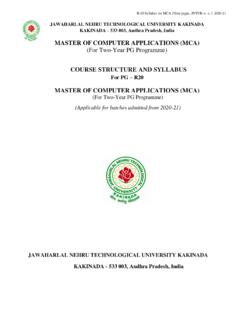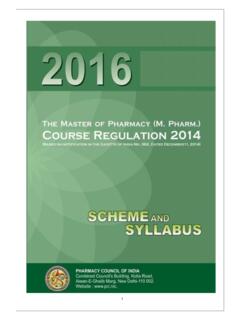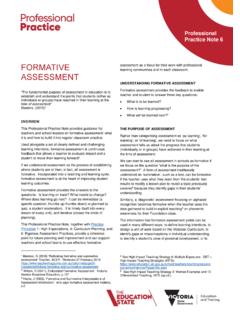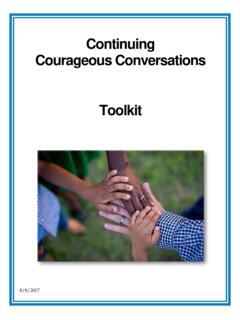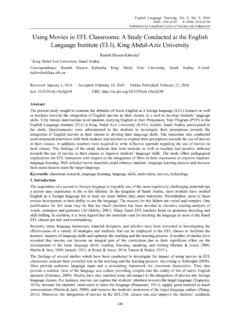Transcription of COURSE STRUCTURE AND SYLLABUS - JNTU kakinada
1 R-19 SYLLABUS for CSE. JNTUK w. e. f. 2019-20 JAWAHARLAL NEHRU TECHNOLOGICAL UNIVERSITY: kakinada kakinada 533 003, Andhra Pradesh, India DEPARTMENT OF COMPUTER SCIENCE & ENGINEERING COURSE STRUCTURE AND SYLLABUS For B. Tech COMPUTER SCIENCE &ENGINEERING (Applicable for batches admitted from 2019-2020) JAWAHARLAL NEHRU TECHNOLOGICAL UNIVERSITY: kakinada kakinada - 533 003, Andhra Pradesh, India R-19 SYLLABUS for CSE. JNTUK w. e. f. 2019-20 JAWAHARLAL NEHRU TECHNOLOGICAL UNIVERSITY: kakinada kakinada 533 003, Andhra Pradesh, India DEPARTMENT OF COMPUTER SCIENCE & ENGINEERING COURSE STRUCTURE - R19 I Year I SEMESTER Sl.
2 No COURSE Code Subjects L T P Credits 1 HS1101 English 3 0 0 3 2 BS1101 Mathematics - I 3 0 0 3 3 BS1106 Applied Chemistry 3 0 0 3 4 ES1112 Fundamentals of Computer Science 3 0 0 3 5 ES1103 Engineering Drawing 1 0 3 6 HS1102 English Lab 0 0 3 7 BS1107 Applied Chemistry Lab 0 0 3 8 ES1105 IT Workshop 0 0 3 9 MC1101 Environmental Science 3 0 0 0 Total Credits 16 0 12 19 I Year II SEMESTER Sl. No COURSE Code Subjects L T P Credits 1 BS1202 Mathematics II 3 0 0 3 2 BS1203 Mathematics III 3 0 0 3 3 BS1204 Applied Physics 3 0 0 3 4 ES1201 Programming for Problem Solving using C 3 0 0 3 5 ES1213 Digital Logic Design 3 0 0 3 6 BS1205 Applied Physics Lab 0 0 3 7 HS1203 Communication Skills Lab 0 1 2 2 8 ES1202 Programming for Problem Solving using C Lab 0 0 3 9 PR1201 Engineering Exploration Project 0 0 2 1 10 MC1204 Constitution of India 3 0 0 0 Total Credits 18 1 10 21 R-19 SYLLABUS
3 For CSE. JNTUK w. e. f. 2019-20 JAWAHARLAL NEHRU TECHNOLOGICAL UNIVERSITY: kakinada kakinada 533 003, Andhra Pradesh, India DEPARTMENT OF COMPUTER SCIENCE & ENGINEERING Introduction The COURSE is designed to train students in receptive (listening and reading) as well as productive and interactive (speaking and writing) skills by incorporating a comprehensive, coherent and integrated approach that improves the learners ability to effectively use English language in academic/ workplace contexts.
4 The shift is from learning about the language to using the language. On successful completion of the compulsory English language COURSE /s in , learners would be confident of appearing for international language qualification/proficiency tests such as IELTS, TOEFL, or BEC, besides being able to express themselves clearly in speech and competently handle the writing tasks and verbal ability component of campus placement tests. Activity based teaching-learning methods would be adopted to ensure that learners would engage in actual use of language both in the classroom and laboratory sessions.
5 COURSE Objectives Facilitate effective listening skills for better comprehension of academic lectures and English spoken by native speakers Focus on appropriate reading strategies for comprehension of various academic texts and authentic materials Help improve speaking skills through participation in activities such as role plays, discussions and structured talks/oral presentations Impart effective strategies for good writing and demonstrate the same in summarizing, writing well organized essays, record and report useful information Provide knowledge of grammatical structures and vocabulary and encourage their appropriate use in speech and writing Learning Outcomes At the end of the module.
6 The learners will be able to understand social or transactional dialogues spoken by native speakers of English and identify the context, topic, and pieces of specific information ask and answer general questions on familiar topics and introduce oneself/others employ suitable strategies for skimming and scanning to get the general idea of a text and locate specific information recognize paragraph STRUCTURE and be able to match beginnings/endings/headings with paragraphs form sentences using proper grammatical structures and correct word forms Unit 1: Lesson-1.
7 A Drawer full of happiness from Infotech English , Maruthi Publications Lesson-2: Deliverance by Premchand from The Individual Society , Pearson Publications. (Non-detailed) I Year - I Semester L T P C 3 0 0 3 ENGLISH (HS1101) R-19 SYLLABUS for CSE. JNTUK w. e. f. 2019-20 JAWAHARLAL NEHRU TECHNOLOGICAL UNIVERSITY: kakinada kakinada 533 003, Andhra Pradesh, India DEPARTMENT OF COMPUTER SCIENCE & ENGINEERING Listening: Listening to short audio texts and identifying the topic. Listening to short audio texts and identifying the context and specific pieces of information to answer a series of questions both in speaking and writing.
8 Speaking: Asking and answering general questions on familiar topics such as home, family, work, studies and interests. Self introductions and introducing others. Reading: Skimming text to get the main idea. Scanning to look for specific pieces of information. Reading for Writing: Paragraph writing (specific topics) using suitable cohesive devices; linkers, sign posts and transition signals; mechanics of writing - punctuation, capital letters. Vocabulary: Technical vocabulary from across technical branches (20) GRE Vocabulary (20) (Antonyms and Synonyms, Word applications) Verbal reasoning and sequencing of words.
9 Grammar: Content words and function words; word forms: verbs, nouns, adjectives and adverbs; nouns: countables and uncountables; singular and plural basic sentence structures; simple question form - wh-questions; word order in sentences. Pronunciation: Vowels, Consonants, Plural markers and their realizations Unit 2: Lesson-1: Nehru s letter to his daughter Indira on her birthday from Infotech English , Maruthi Publications Lesson-2: Bosom Friend by Hira Bansode from The Individual Society , Pearson Publications.
10 (Non-detailed) Listening: Answering a series of questions about main idea and supporting ideas after listening to audio texts, both in speaking and writing. Speaking: Discussion in pairs/ small groups on specific topics followed by short structured talks. Functional English: Greetings and leave takings. Reading: Identifying sequence of ideas; recognizing verbal techniques that help to link the ideas in a paragraph together. Reading for Writing: Summarizing - identifying main idea/s and rephrasing what is read; avoiding redundancies and repetitions.
